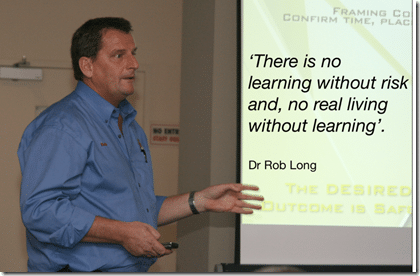Originally posted on August 26, 2017 @ 10:05 AM
Beware the Cult of Denial

At a deeper level, the denial of illness and the denial of denial is known as Anosognosia (https://en.wikipedia.org/wiki/Anosognosia). Sometimes unconscious denial helps us to cope with extreme trauma and shock, this is evident when we experience extreme pain and loss. In such a state our mind shuts out the loss and pain because the confrontation would be too crushing. On most occasions such denial is only temporary, soon we face up to reality and learn to cope with the new reality. This is the dynamic and organics of resilience (https://safetyrisk.net/an-social-ecology-of-resilience/). However, when denial persists it then emerges as a delusion and this makes it difficult to live in the real world. There is no great benefit in maintaining a delusion or denial in the face of reality.

Recently some of us from the Social Psychology of Risk group said farewell to Max Geyer at his funeral service and wake conducted by Graham Long from the Wayside Chapel. It’s pretty tough standing in front of a casket to then deny fallibility, harm and death. The symbolism of standing in front of a coffin and saying ‘goodbye’ is the reality of acceptance. As much as we don’t have answers (and neither the right questions) does it make sense to talk about zero. Such symbolism serves to confront each of us with our own inevitable death.
Whilst this discussion may seem morbid to some, it is intended to be helpful. Denial of fallibility, mortality, humanity and randomness doesn’t help anyone. The more we speak nonsense, the more those who have suffered are convinced that we are not the ones capable of empathy in a moment of loss or crisis. We don’t seek care and empathy from people who talk nonsense. We don’t want to talk to people who treat us like a number. We are not interested in people who treat us like an object or some lab rat. Real life is not some safety experiment to act as voyeur to the suffering of others. This is why the maintenance of zero language is a dangerous ideology (https://vimeo.com/230093823). This is why we should only speak of ‘Tackling Risk’ (https://www.humandymensions.com/product/tackling-risk/), not risk elimination. There is no learning without risk. Neither the WHS law, regulation or risk and safety standards expect perfection or no mistakes. ALARP is a denial of zero.
The reality is, we don’t need to talk nonsense, we know that it is good at times to be silent in our language because we know such language is unhelpful. We know that if we use some words with colleagues it alienates them, if we use deficit language with our children it will make them less resilient. We chose not to speak nonsense to others because it is a denial of reality. Regardless of our goal or wish, we know that nonsense language has no place in the conversation because of its effect and trajectory. Unfortunately, the focus on denial can be addictive, as we deny our fallibility it fosters an attraction to the cult of denial. This is anosognosia, the denial of denial. The language of acceptance is far more helpful than the language of denial.
Zero, The Maintenance of a Danagerous Idea from Human Dymensions on Vimeo.



Do you have any thoughts? Please share them below